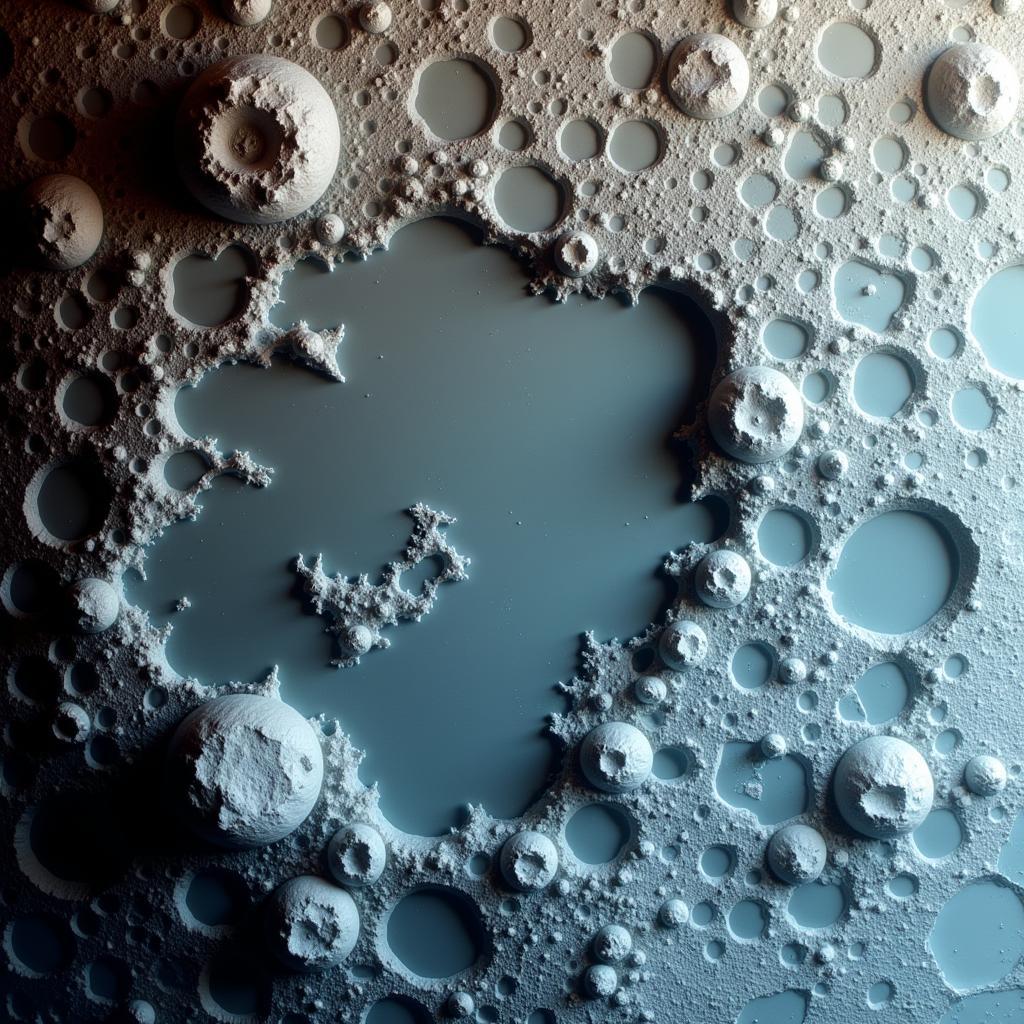What is the color of Ceres? Ceres, the largest object in the asteroid belt between Mars and Jupiter, isn’t a vibrant jewel in space but rather a subtle blend of grays, browns, and hints of blue. Its surface tells a complex story of its composition, geological history, and interaction with the solar system’s environment. Let’s delve deeper into the fascinating hues of this dwarf planet.
Unmasking the Subtle Shades of Ceres: A Deeper Look
Ceres’ color palette is far from monotonous. While predominantly gray, variations in shade and subtle hints of other colors reveal much about its surface composition. These subtle differences are key to understanding the dwarf planet’s formation and evolution. Its overall appearance is influenced by a mixture of rocky materials, hydrated minerals, salts, and perhaps even remnants of a subsurface ocean.
The Gray Canvas: A Story of Rocks and Minerals
The pervasive gray hue is attributed to the presence of phyllosilicates, a type of clay mineral, and carbonates like those found in limestone. These minerals reflect light in a way that creates the overall gray appearance. The varying shades of gray indicate differences in the mineral composition and the degree of weathering the surface has undergone.
Hints of Blue: Clues to Water Ice?
Interestingly, certain areas on Ceres show a slight blue tinge. This has led scientists to speculate about the presence of water ice beneath the surface. While not visible directly, the blue tint might be caused by the scattering of light by tiny ice particles mixed with the surface material, or perhaps hints of ammonia-rich clays. These bluish hues are particularly intriguing, suggesting a more complex composition than initially thought.
Brownish Patches: Signs of Organic Molecules?
Some regions on Ceres exhibit a brownish hue, a phenomenon that has sparked considerable interest among scientists. These patches could indicate the presence of organic molecules, the building blocks of life. Further investigation into the nature of these organic compounds is crucial for understanding the potential for life beyond Earth. The brown tones contribute to the heterogeneous surface of Ceres, showcasing its dynamic past.
 Ceres Blue and Brown Patches, Organics
Ceres Blue and Brown Patches, Organics
FAQs about Ceres’ Color
-
Why is Ceres not more colorful like other planets? Unlike gas giants with vibrant atmospheres, Ceres is a rocky body with a surface composed mostly of minerals, leading to its muted color palette.
-
What does the color of Ceres tell us about its composition? The grays, blues, and browns provide clues to the presence of specific minerals, water ice, and possibly organic molecules.
-
How do scientists determine the color of Ceres? Data from spacecraft like NASA’s Dawn mission allows scientists to analyze the light reflected from Ceres’ surface, determining its color composition.
-
Does the color of Ceres change over time? While the overall color remains relatively constant, subtle changes may occur due to impacts or other geological processes.
-
Are there any color differences between Ceres’ northern and southern hemispheres? Yes, subtle variations exist, possibly due to differences in sunlight exposure and surface composition.
-
Why is understanding Ceres’ color important? Studying the color helps us understand the dwarf planet’s formation, composition, and the potential for past or present water activity.
-
How does Ceres’ color compare to other objects in the asteroid belt? Ceres is generally darker than many other asteroids, likely due to its different composition and the presence of hydrated minerals.
Need More Help with Color?
For all your color needs, from understanding the cosmos to painting your home, contact Color Box Hanoi!
Call us at 0373298888, email us at [email protected], or visit us at 86 Cau Giay, Hanoi. We have a 24/7 customer service team.
In conclusion, what is the color of Ceres? It’s a complex question with a nuanced answer. The predominantly gray surface of this dwarf planet, interspersed with hints of blue and brown, reveals a fascinating story of its composition, geological history, and potential for harboring the building blocks of life. Further exploration of Ceres promises to unlock even more secrets hidden within its subtle hues.

